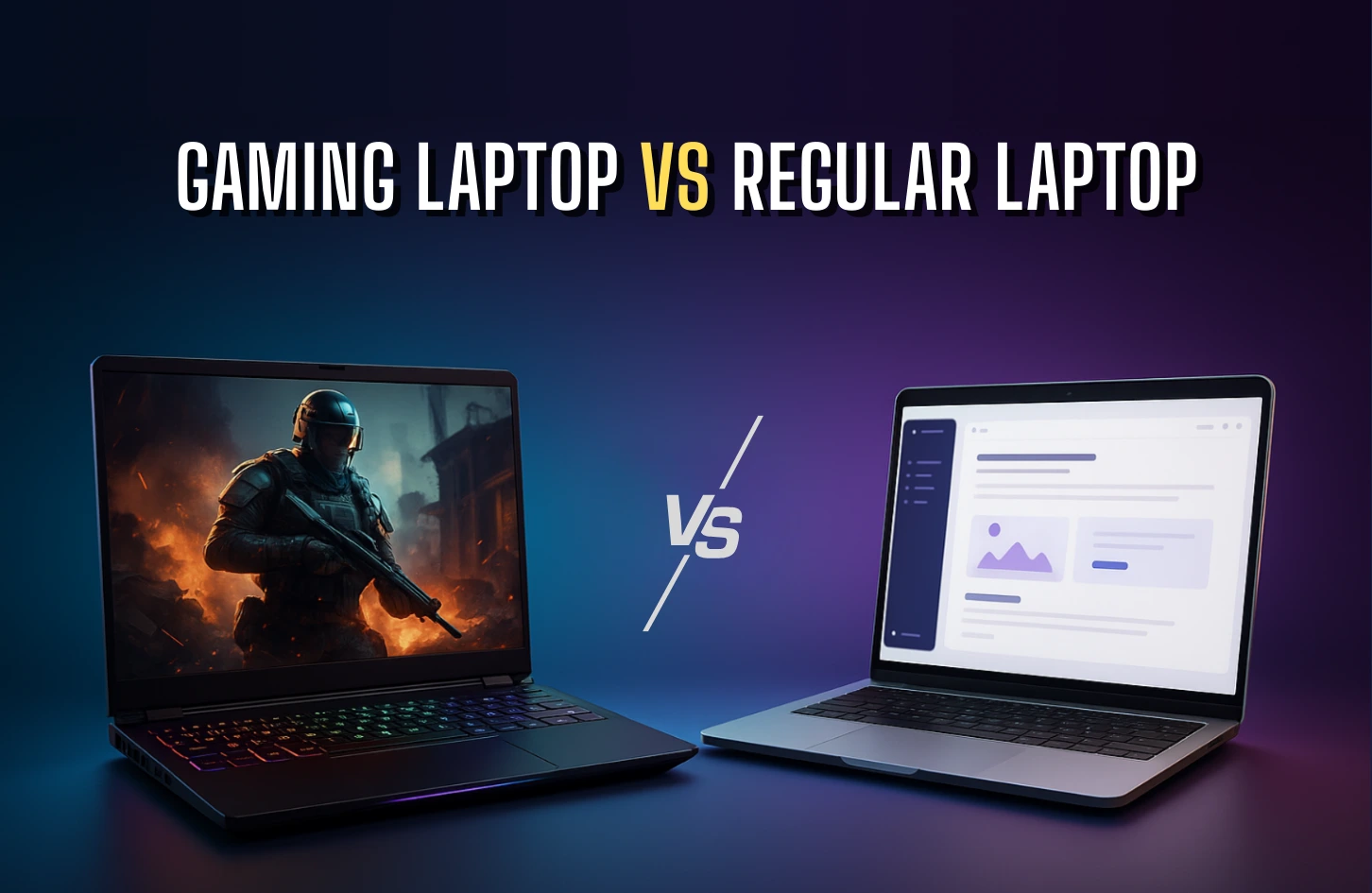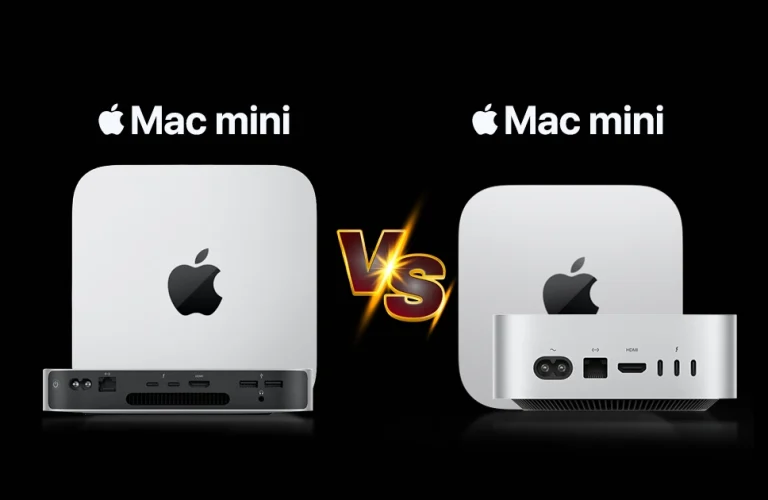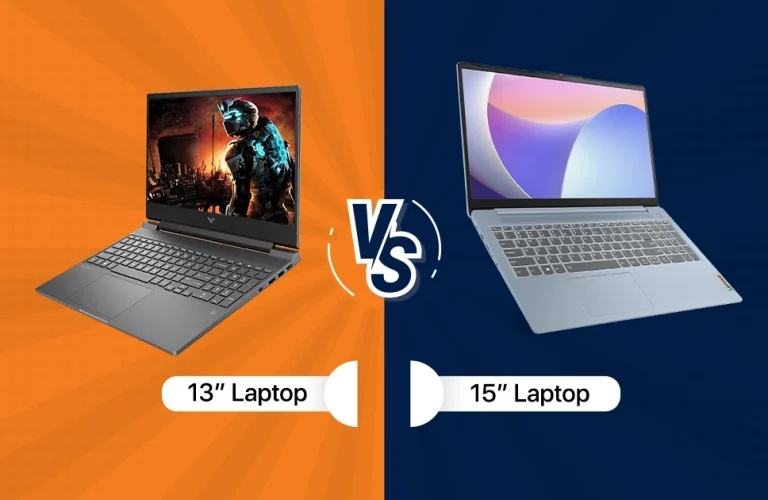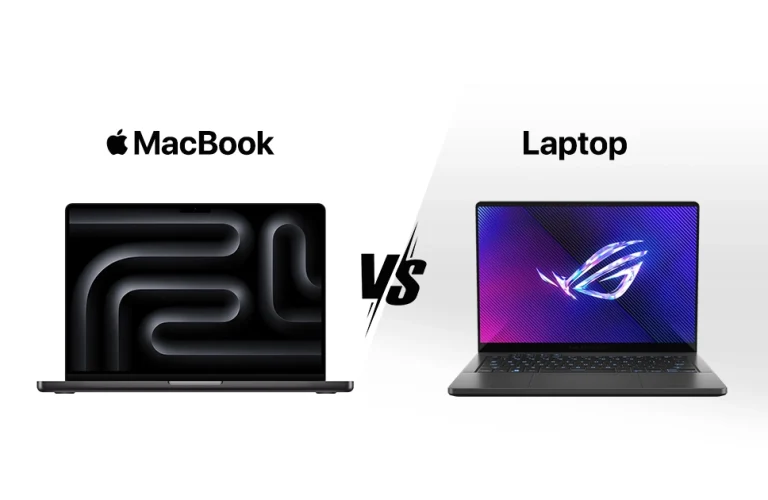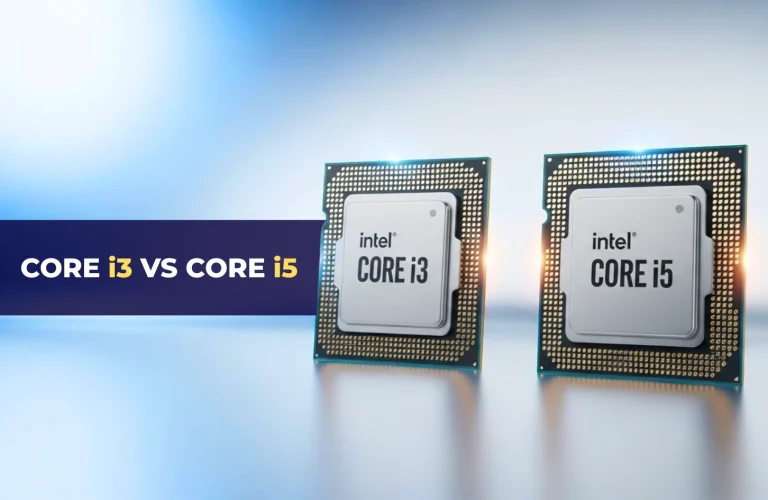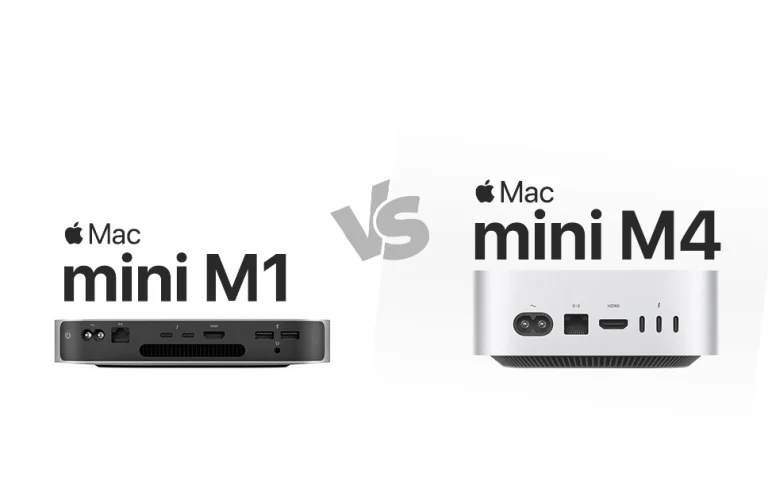Difference Between Gaming Laptop and Regular Laptop: A Straight Talk
Buying a laptop for science & engineering studies is a common practice around the globe. When I got into engineering, many of my classmates started getting their very first laptop. I still recall one who invested in a gaming laptop, given that it’s a future-proof choice.
Within 3 months, reality hit him hard. The laptop was bulky and noticeably heavy, making it quite a burden to carry between regular classes. The beefy power adapter made it worse, lasted barely two hours, and forced him constantly looking for power outlets around campus.
Instead of helping, the specs worked against him. The extra cooling fans randomly kicked in lecture halls, while flashy RGB lights made it awkward in professional setups. And while it could run games flawlessly, he could rarely manage time for gaming, making the “futureproof investment” feel “utterly wasteful”. A power efficient laptop with lightweight design would’ve served him far better.
Well, this is why choosing between gaming laptop vs normal laptop should always be based on real needs; not raw specs. Or else, you risk not just spending on features you don’t need on your computer, but also ruining the entire experience.
Gaming Laptop vs Normal Laptop – The Real Difference
Likewise, gaming laptops are for gaming, and normal laptops… well, they’re for everything else. But here’s the catch: with advances in every area of computing, defining a “normal” laptop has become trickier than ever. So let’s settle it once and for all —
Gaming laptops are designed with gaming at the core. As gaming software necessitates more power to work advanced in-game graphics and physics, these often feature stronger CPU, GPU, RAM with superior display technology. Running all these energy hungry components generates more heat in comparison, hence the cooling system is also typically beefier.
Normal laptops (or more accurately, non-gaming laptops) are ideally designed for typical computation and multimedia tasks. From design to performance, everything checks for productivity on the go — the actual purpose of a laptop. Hence, they are made with non-fancy, standard components.
In Comparison: Gaming vs Regular Laptop
Before we detail on where regular laptops differ from game-focused laptops, check out the comparative table below for a quick glance –
| Feature | Gaming Laptop | Regular Laptop |
| CPU/GPU | High-performance, dedicated GPU | Energy-efficient, integrated GPU |
| Battery | 3 – 5 hours | 6 – 12 hours |
| Portability | Heavy, bulkier | Light, travel-friendly |
| Display | High refresh rate | Color-accurate |
| Price | Higher upfront | More budget-friendly |
Let’s dissect and compare everything between a regular laptop and a laptop for gamers:
CPU Capabilities
- Gaming laptops: Gaming laptops usually consist of higher tier processors than typical laptops, such as Core Ultra 5, 7 or 9 CPU from Intel. On the AMD end, it’s Ryzen 5, 7 and 9. They come with higher clockspeeds like 4.6 GHz and higher core count. The CPU is often an unlocked one and supports clockspeed boosting. You’ll see gaming laptops often built with “H” series CPUs from Intel that are intended for “high-performance”.
- Regular laptops: In the case of regular laptops, “U” series CPUs are the norm, and their performance is usually dialed down so that they don’t overheat. CPUs like Intel’s Pentium or Celeron series may steal the spotlight too, but those are quite old and mostly out of market. Today’s Ultrabooks or business laptops come with AMD Ryzen 3 or 5 CPUs or one from the same tier in the Intel laptop region.
GPU Prowesses
- Gaming laptops: Historically, games have always been judged by their graphics. And for good graphics, industry speaks for the game that “looks awesome!”. That’s why gaming laptops feature a dedicated graphics processing unit (GPU) instead of an “integrated GPU” (iGPU).
You’ll see most gaming laptops packing an RTX 40 or 50 series laptop GPU from NVIDIA. As a dedicated graphics card lifts off the load of calculation from the CPU, you get to enjoy lag-free gaming.
- Regular laptops: iGPUs are just good enough for regular computing and light graphical tasks like using MS office or Google Workspace, maybe creating presentation slides, surfing the web and slight photo editing. But these iGPUs start to bottleneck as soon as you throw any resource intensive job like running a graphics design software.
Visual Experience
- Gaming laptops: As you already know, “graphics” are one of the biggest talking points of any game. Delivering those jaw-dropping scenes is crucial, or the whole experience just falls flat. To make your eyes feast on these visuals, gaming laptops pack in advanced display tech. Features like 120Hz to 360 Hz high refresh rates, brighter screen, greater contrast and panel technologies like OLED or Mini LED are considered. On the resolution front, the story is the same again – no gaming laptop worth its salt drops below FHD.
- Regular laptops: These are catching up with refresh rates too, you’ll find 90Hz and 120Hz panels in many non-gaming laptops than the 60Hz standard, that’s been around for a couple of decades. However, most of these do not offer variable refresh rate (VRR) technologies like NVIDIA’s G-SYNC / AMD FreeSync, or super rich 3.5K resolutions like in the gaming ones. Rather, they focus more on energy efficiency, color accuracy and eye comfort features like SGS, X-Rite or TÜV Rheinland certifications.
Battery & Portability
- Gaming Laptops: Due to needing significantly more power, gaming laptops tend to pack a larger capacity battery for longer playtime. This added capacity physically adds bulk and makes these heavier. However, the extreme power hungry configuration often results in “lower battery life” than regular ones. However, the scene is changing now with better power management tools and AI optimization.
- Regular Laptops: This is one of the places where traditional laptops shine. With low power drawing components, a user usually ends up enjoying longer runtime from these laptops while staying lighter than the gaming counterparts. Therefore, laptops for non-gamers typically win in the portability section.
Cooling, Design & Aesthetics
This is where the two counterparts set them apart with equally appealing advantage over another –
- Gaming Laptops: To complement a gaming setup, laptops for gamers are always made with an aggressive design that literally “screams” gaming. Gaming laptops typically follow aero-dynamic styles that signal speed and power. Clicky, mechanical keys are often paired together for tactile feedback. Accent lights and backlit keyboards with programmable RGB function is also a common trait of them.
To keep those “angry” electronics cool, gaming laptops feature advanced cooling systems with larger vents, thicker heatpipes and stronger fans. Some of the overkill gaming machines also feature liquid cooling, and some even make use of the key-gaps in the keyboard to pass more hot air.
- Regular Laptops: Contrastingly, traditional laptop designs aim to blend in your everyday life with a sleek and minimalist aesthetic. To keep these durable and sturdy, light but strong metals like aluminum are a common choice for the chassis. The core design idea is based on productivity while remaining minimalist.
Many regular laptops feature a backlit keyboard, but the light’s color is almost always white – so you can work or study even in the dark. The cooling system works just enough to keep the thermals tamed and doesn’t use high-speed fans or larger heatpipes; some even make the fans go completely stopped while under very low load or is idle.
So, Are Gaming Laptops Better Than Normal Ones?
Sometimes, yes, but only if it matches your lifestyle. If it comes to a point where you’ve found an absolutely amazing gaming laptop deal and it costs the same as a regular one, no-brainer that the gaming one will give you better horsepower, better cooling and gamer-oriented ports. But that power may also bring a bulk with potential noise and worse battery life.
Now you might be wondering, do gaming laptops last longer than normal laptops?
If so; the gaming rig steals the deal, right?
Sadly no, because the lifespan of any laptop depends on how you use it.
By properly taking care of a laptop with healthy hardware–software habits, any laptop; regardless if it’s a gaming or traditional one – should easily be able to stretch from 4 to 7 years, or even more.
So, don’t just buy specs, but buy what you actually need. Let’s now look at some use cases and weigh if locking on a gaming laptop will benefit you or not.
Who Should Buy What?: Popular Gaming & Work Laptops for All Users
From students to scientists, any user-group can benefit from a gaming laptop, but not every individual will benefit the same.
Students and Casual Gamers
There’s hardly any student who wouldn’t want a gaming laptop, but you’ll want it to be light both on weight and wallet damage. What you should be looking at is solid playability and decent thermals. Look at Acer’s Nitro series for value hardware, Asus TUF for rugged budget builds, or HP Victus if you want a tidy balance of price and productivity features. These are equally good for hopping between campus and dorm room gaming.
[Side Quest: 💭🤔 Can You Game On a Regular Laptop?
To some extent, ABSOLUTELY !⚡
Don’t stress if a gaming laptop is out of reach. Tweak your current laptop and you may see a real performance jump. Do this right and you might even run older AAA titles or indie hits like Hades.
First, kill all the unwanted background apps, update the GPU drivers, and keep an eye on temps because thermal throttling kills FPS. A cooling pad can be your best cheap upgrade. Dial graphics down smartly, starting with resolution and shadows, then anti-aliasing, texture quality, and view distance. Always pick a performance power plan while plugged in.
You’ll find the detailed step by step instructions in Optimizing Laptop for Better Gaming.]
Serious Gamers
Pro-grade eSports players need sustained frame rates, hefty cooling potential with gamer-focused I/O that allows easy upgrades for their game-slash-streaming studio setup. Aim for ASUS ROG Strix for esports chops, MSI Raider for raw performance tuning, or GIGABYTE’s Aorus line of laptop for gamers that combine high-TGP configs and aggressive cooling.
These hit the sweet spot for competitive play. Take a tour on our 7 Best Gaming Laptops and explore more killer machines that crunch through graphics and physics in demanding software like Alan Wake 2 or Microsoft Flight Simulator.
High-end Users & Creators
Those roaming in the creative spectrum of gaming and searching for a laptop for 3D modeling or game designing laptops, their workloads demand pro GPU compute and color-accurate panels.
Consider ROG Zephyrus for portable power, MSI Stealth for full-throttle desktop replacement performance, or GIGABYTE AERO for creator-grade displays and studio features. Also, a few of these rigs double as solid laptop for machine learning, so you can train models or run inference on the go.
Travel + Power = Hybrid Workflow
If your workflow demands constant moving and also pro-grade performance, you need a carry-friendly design without giving up serious computation. Look at MacBook Pro for compact pro silicon and battery life, Dell XPS for premium Windows portability, or a Zenbook from ASUS for thin and light solution with solid I/O. Touchscreen & 2 in 1 laptops may complement your hybrid workstyle while briefing clients or collaborating in sketchboards on the move.
A Middle-path: Slowly Build a Gaming PC & Buy A Normal Laptop
If your budget allows, this is the smart balance: a lightweight, power efficient laptop for classes and collaboration, plus a desktop gaming PC you can upgrade over years. Desktops win on cooling, upgradeability and price/perf.
If you must have mobility + hardcore gaming, get a proper high-end gaming laptop; but avoid low-tier “gaming” laptops. Because cheap thermals = severe throttling and fast depreciation.
Remember:
- Don’t buy a bulky gaming laptop for campus life unless you need it everywhere.
- If you do choose a gaming laptop, invest in a reputable brand and good cooling design. Or you’ll regret it in 12 – 24 months
- Look for AI powered laptops with dedicated NPUs to enjoy a dramatic shift in organizing your workflow with cloud gaming easing local GPU demand for work and play.
Wrapping up
Choose a normal laptop if: Your day is lectures, notes and light apps, choose a regular laptop and prefer on-chip AI for productivity.
Choose a gaming laptop if: You render, edit or game. Prioritize strong cooling, avoid cheaping out and pick a model that actually meets your daily grind.
If you’ve stuck around this far, you’re smart and know what you want. Still unsure? Visit your nearest Vertech or text us, our tech geniuses are always ready to help.

Ifrad Mahbub is a tech enthusiast with years of experience in writing about cutting-edge smart gadgets, cameras, and computers. He is passionate about exploring new technologies and engaging with like-minded professionals on the future of digital trends.
